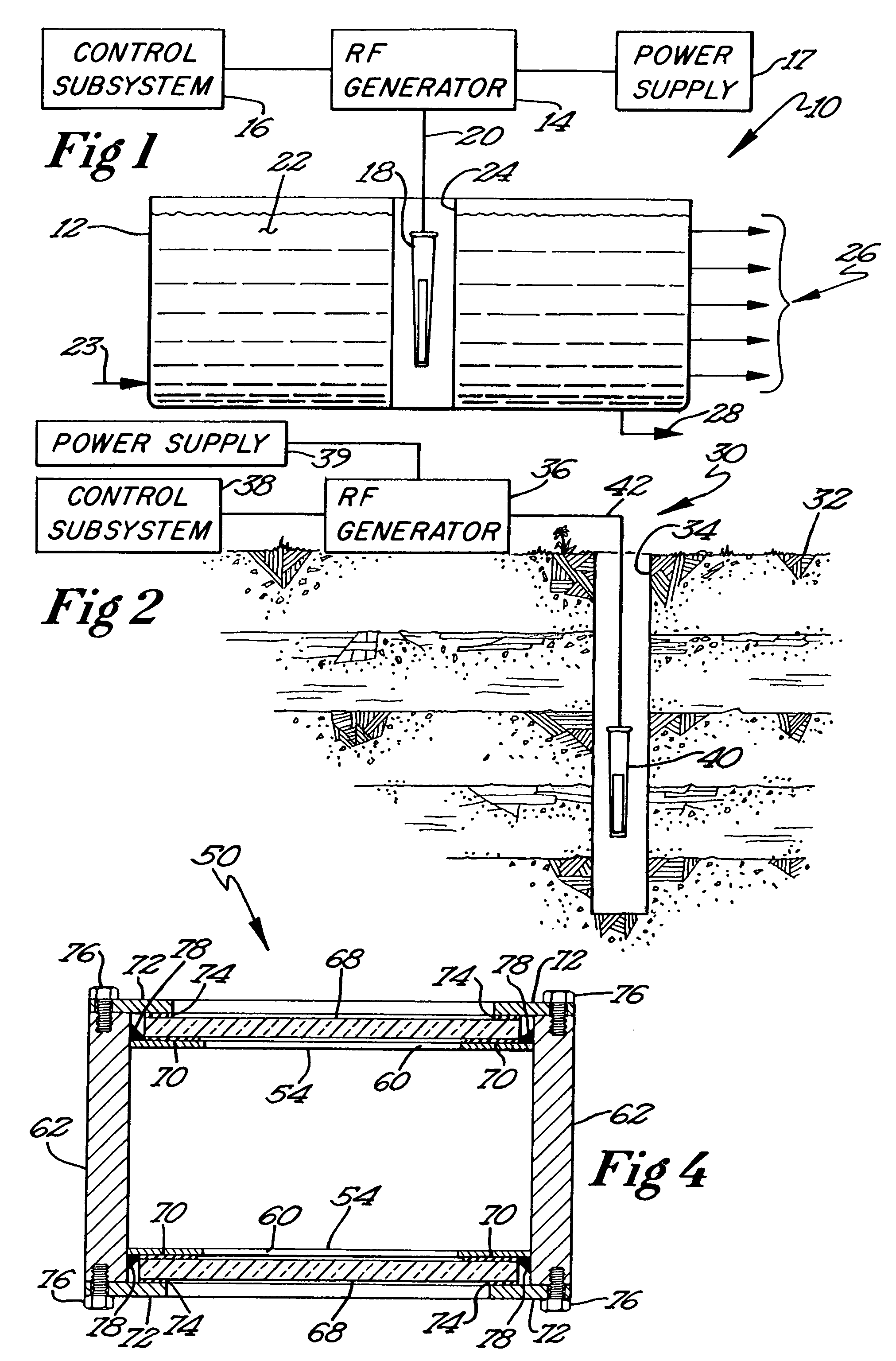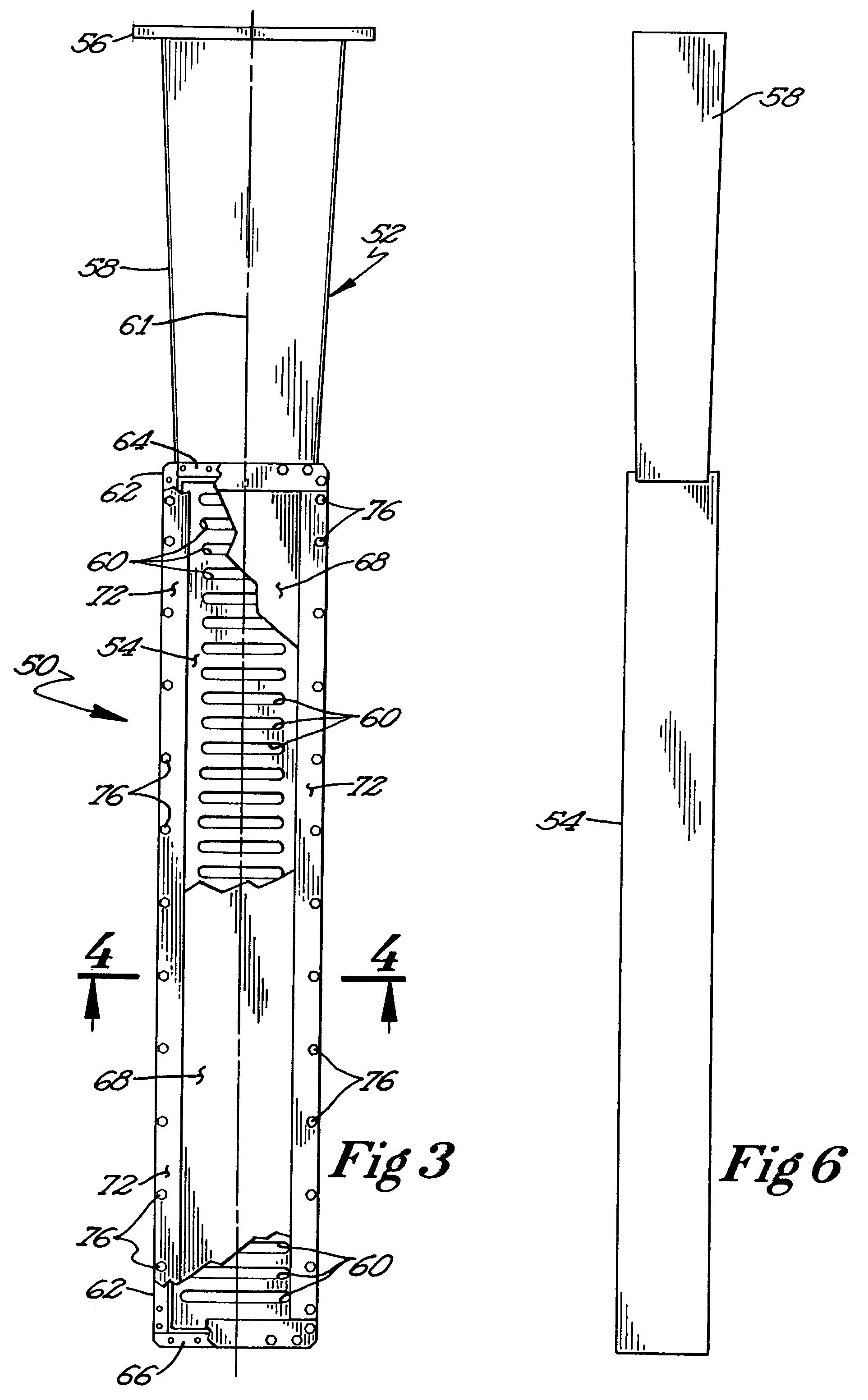Microwave demulsification of hydrocarbon emulsion
a technology of hydrocarbon emulsion and microwave energy, applied in the direction of subaqueous/subterranean adaption, water/sludge/sewage treatment, chemistry apparatus and processes, etc., can solve the problems of reducing the pumping power involved in extracting petroleum products, limiting the effectiveness of those approaches, and microwave energy often does not penetrate sufficiently deeply to treat the entire emulsion
- Summary
- Abstract
- Description
- Claims
- Application Information
AI Technical Summary
Benefits of technology
Problems solved by technology
Method used
Image
Examples
Embodiment Construction
[0021]Various embodiments of a demulsification system facilitate recovery of hydrocarbons, such as petroleum products, from a liquid or solid substrate by using microwave energy to energize and separate molecular bonds between the hydrocarbons and the substrate. A microwave applicator delivers microwave energy to a treatment volume containing an emulsion of a hydrocarbon and a substrate. Delivering the microwave energy to the emulsion imparts energy to electrons and molecular bonds between the hydrocarbon and the substrate. As a result, the hydrocarbon and substrate molecules separate into strata or layers. Hydrocarbons and other products can then be recovered from their respective layers. The treatment volume may be located either above or below ground. For example, the treatment volume may be a treatment tank or a medium located near a down hole or bore hole, such as a geologic formation containing oil shale, tar sand, or ground water contamination.
[0022]In one implementation, a r...
PUM
 Login to View More
Login to View More Abstract
Description
Claims
Application Information
 Login to View More
Login to View More - R&D
- Intellectual Property
- Life Sciences
- Materials
- Tech Scout
- Unparalleled Data Quality
- Higher Quality Content
- 60% Fewer Hallucinations
Browse by: Latest US Patents, China's latest patents, Technical Efficacy Thesaurus, Application Domain, Technology Topic, Popular Technical Reports.
© 2025 PatSnap. All rights reserved.Legal|Privacy policy|Modern Slavery Act Transparency Statement|Sitemap|About US| Contact US: help@patsnap.com



